Images from the High Arctic of Canada.
Nunavut.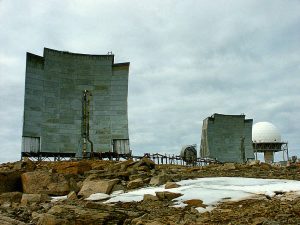
The Distant Early Warning (DEW) Line was a system of radar stations in the far northern Arctic region of Canada, with the purpose of detecting incoming Soviet bombers during the Cold War 1. The DEW Line was operational from 1957 to 1993 2. The station you mentioned, FOX-5, was an auxiliary radar station located on Broughton Island in the Qikiqtaaluk Region of Nunavut, Canada 13. It was situated at an altitude of about 1900 feet above sea level on the summit of a small rocky plateau near the southeastern corner of the island 1. The station was part of the Canadian segment of the DEW Line and was established in 1957 1. The station was replaced by a new one, which now stands in place of the old buildings and radar towers 1
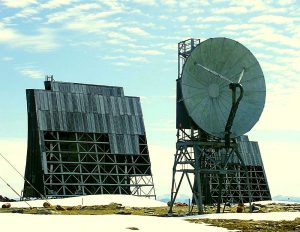
The Dewline.The Distant Early Warning Radar Line. Site: FOX-5 Qikiqtarjuaq (Broughton Island) Nunavut, Canadian High Arctic. Old Fox-5 is now buried in the ground. All part of history now. The new station now stands in replacement of the old buildings and radar towers. One of the many opportunities I was able to witness in the time I spent in the high Arctic of Canada.

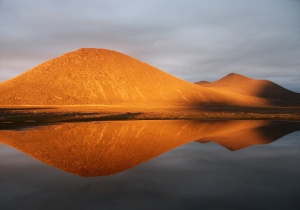
Qikiqtarjuaq, Nunavut – The setting sun turns the mountain orange.
The setting sun can create a beautiful orange hue on the mountains. Qikiqtarjuaq is a community located on Broughton Island in the Qikiqtaaluk Region of Nunavut, Canada 1. It is situated just north of the Arctic Circle. And adjacent to the eastern coast of Baffin Island at the Davis Strait 1. The region is known for its majestic mountain ranges, including the Auyuittuq National Park, which is conveniently close to Qikiqtarjuaq 1. The temperature hovers around 10°C in the months of July and August, while during the winter months, temperatures can sometimes drop to -40°C 1. It is often very windy here, and it is quite dry, with an average of 270cm of snowfall each year and 3.5cm of rain 1.
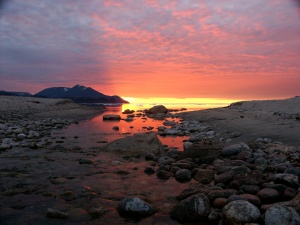
Qikiqtarjuaq, Nunavut – sun set.
Burst of Poppy – Resolute Bay, Nunavut. The Arctic poppy, also known as Papaver radicatum, is a perennial herb that grows in the tundra regions of the Arctic and sub-Arctic. It has a height of around 14 cm and is leafless, with a cup-shaped flower on each stem. The flowers are generally yellow and turn to the sky to take sunlight for photosynthesis. Moreover, the petals of the flowers look like tissue paper and are very silky 1
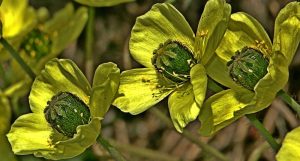
Arctic Poppy – Resolute Bay, Nunavut.
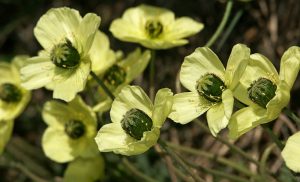
Arctic Poppy
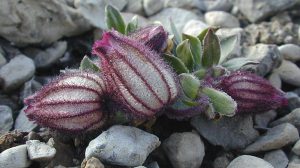
Nodding Bladder Campion (Silene uralensis ssp. uralensis) is a perennial plant that is native to Greenland, northern Canada, Alaska, East Asia, and Siberia1. Also known as apetelous catchfly or nodding campion1. The plant has tufts of basal leaves, a thick taproot, and inflated flowers that range from white to purple in color12. Petals are stalked, and the stalks are about equalling or exceeded by the calyces, flared above and usually flanged at the bases, the blades generally narrower than the stalks, 3-4 mm long, 2-cleft3. There are three subspecies, including Silene uralensis subsp. uralensis, Silene uralensis subsp. ogilviensis, and Silene uralensis subsp. porsildii1.
Melandrium apetalum is a synonym for Silene uralensis1.
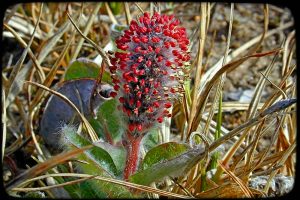
Arctic Willow (Salix arctica) is a tiny creeping willow that is adapted to survive in harsh Arctic conditions, specifically tundras. It is the northernmost woody plant in the world, occurring far above the tree line to the northern limit of land on the north coast of Greenland1. The plant typically grows to a height of between 3-25 cm (1-10 in) with its stems, which can be erect or trailing, showcasing a reddish-brown or yellow-brown hue2. The leaves are round, shiny green, and 1-4 cm (1⁄2 – 11⁄2 in) long with long, silky, silvery hairs1. The Arctic willow is a food source for several Arctic animals, including muskoxen, caribou, Arctic hares, and lemmings1.
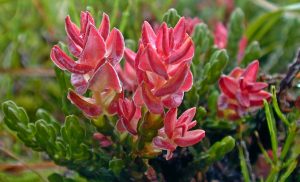 Arctic Heather is a plant that grows in the Arctic tundra. It is known for its beautiful purple flowers that bloom in the summer. The translucent seed pods that remain on the plant throughout the winter 1. The seed pods of some plants, like the prickly saxifrage, have long stems that help with seed dispersal. With their seed pods poking up above the hard-packed snow. They vibrate in the fierce winter winds and release their seeds 2.
Arctic Heather is a plant that grows in the Arctic tundra. It is known for its beautiful purple flowers that bloom in the summer. The translucent seed pods that remain on the plant throughout the winter 1. The seed pods of some plants, like the prickly saxifrage, have long stems that help with seed dispersal. With their seed pods poking up above the hard-packed snow. They vibrate in the fierce winter winds and release their seeds 2.
The Arctic tundra may seem stark and barren. But it harbors some of the most exquisite and resilient flowers. These small blooms defy the harsh conditions, adding splashes of color to the icy landscape. Let’s explore a few of these remarkable Arctic flowers: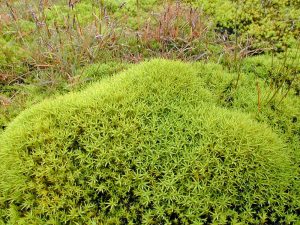
- Tufted Saxifrage: This delicate high-arctic flower graces the Canadian, Russian, and Lapland Arctic. Standing at about 10 cm tall, its white blossoms emerge later in the Arctic season, typically around mid to late July. Interestingly, this plant was once used for its medicinal properties in treating bladder stones.
- Arctic Cotton Grass: Revered in Inuit culture, Arctic Cotton Grass blooms in mid-summer. It thrives in wetter areas and swampy grounds. The Inuit ingeniously used it as a candle wick
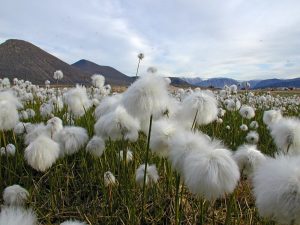
Arctic Cotton-grass. Qikiqtarjuaq (Boughton Island) Nunavut, Canada.
, collecting, drying, and rolling it to mix with seal fat. The resulting cotton grass wick produced a small flame, just enough to warm an igloo.
- Arctic Draba: This small, green plant forms a round tussock of hairy leaves, culminating in clusters of yellow flowers. It prefers graveled alkaline barrens.
- Arctic Parraya: Clusters of pinkish-purple flowers adorn leafless stems radiating from a rosette of long, fleshy, blue-green leaves. You’ll find it flowering in late June and July on Somerset Island.
- Purple Saxifrage: Often the first plant to bloom (around late June). Purple Saxifrage boasts matted trailing branches or dense clusters with small, leathery leaves. Its large purple flowers stand out against the bleak surroundings. So earning it a place among the world’s greatest beauties.
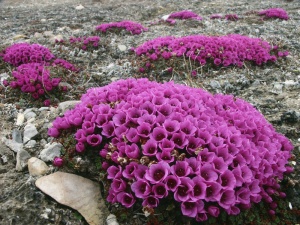
Remember, these Arctic flowers are not just botanical wonders; they’re resilient symbols of life in extreme environments.
For more captivating glimpses of Arctic flora, you can explore the flora section of Arctic Watch’s site1. Happy botanical adventures!
Purple Saxifrage
Flora of the Canadian Arctic

Alpine Milk-vetch
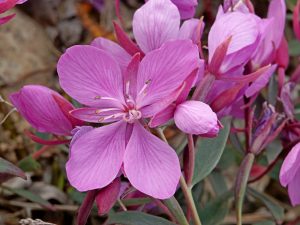
Broad-leaved Willow-herb

Arctic Poppy
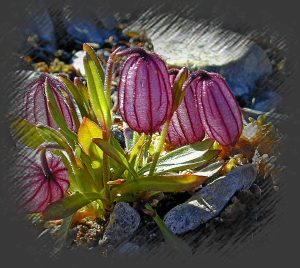
Nodding Bladder Campion

Broad-leaved Willow-herb is a flowering plant that belongs to the family Onagraceae. It is found in the tundra meadows of Nunavut, Canada1. The plant is also known as Epilobium latifolium and is characterized by its broad leaves and pink flowers1.
The tundra meadows of Nunavut are home to over 200 species of flowering plants, including Arctic cotton, Arctic fireweed, Arctic heather, Arctic willow, Labrador tea, Lapland rosebay, Mountain aven, Mountain sorrel, and Moss campion1. These plants have adapted to the harsh conditions of the tundra and are an important part of the ecosystem.
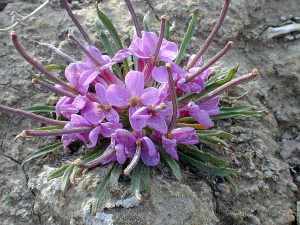
Pallas’ Wallflower – Ellesmere Island, Nunavut.Canada.
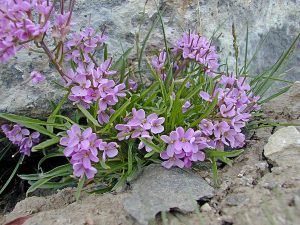
Pallas’ Wallflower, Ellesmere Island, Nunavut.Canada.
Pallas’ Wallflower, scientifically known as *Erysimum pallasii*.
Is a hardy plant that thrives in the extreme conditions of the Arctic. This flower typically grows in rocky, well-drained soils and is often found in tundra environments. Photographed on Ellesmere Island in Nunavut, Canada,
Ellesmere Island is part of the Qikiqtaaluk Region and is known for its rugged terrain and cold climate. The island’s unique ecosystem supports a variety of Arctic flora and fauna. So making it a fascinating place for botanists and nature enthusiasts.
Ellesmere Island, with its harsh Arctic environment.
Supports a variety of resilient plant species. Some notable plants found on the island include:
– **Arctic Moss (*Polytrichum juniperinum*)**: A common moss in Arctic regions.
– **Dwarf Fireweed (*Epilobium latifolium*)**: A flowering plant in the evening primrose family.
– **Creeping Willow (*Salix arctica*)**: A type of willow adapted to the Arctic climate.
– **Various Mosses and Lichens**: These include species that have been preserved under glaciers for centuries and can still sprout new growth.
Ellesmere Island’s flora is a testament to the adaptability of life in extreme conditions.
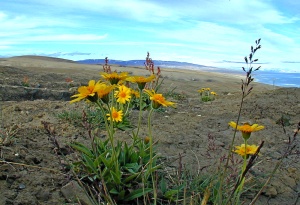
Alpine Arnica – Ellesmere Island, Nunavut.

